Buy or gift a stand-alone digital subscription and get unlimited access to dozens of back issues for just £18.99 / $18.99 a year.
Please register at www.exacteditions.com/digital/cornucopia with your subscriber account number or contact subscriptions@cornucopia.net
Buy a digital subscription Go to the Digital EditionHome to the world’s oldest settlements and land of biblical prophets – the Tigris and Euphrates basin is a fabled but forgotten frontier. In a 30-page celebration, Manuel Çitac captures its splendour in 14 glorious spreads of photography, while Min Hogg keeps a wry diary on her sortie to this hard-baked corner of Anatolia.
Our flight from Istanbul to Gaziantep entailed a 4.30am start, and remains an uneventful haze, with dim recollections of something musically folklorish meeting us on the Tarmac, and several of our party getting on the wrong coach, having failed to recognise their fellow travellers. Once en route, Haluk – a Tatar by birth, an angel by nature and our Marlon Brando lookalike guide for the expedition – gently explained that we would do well to stick to tea and soup for the next few days as our delicate digestive systems would never cope with Turkish cuisine. How we laughed and resolved to ignore his advice.
Everywhere there are roses at the roadside and low bushy trees of pistachio nut, a speciality of the region, but my strongest impression is that every man in these parts must either be a lorry driver, a garage owner or a motor mechanic. Sometimes there are six repair workshops in a row in the middle of nowhere.
Just as the scorching sun reaches its zenith, we arrive at Belk›s, or Zeugma. Personally I feel too hot and sleep-deprived to appreciate the full significance of what is here, or since we are beside an artificial lake behind a dam on the Euphrates, what is no longer visible, either having been submerged beneath the rising water or remaining unexcavated beneath the soil. It is said that this archaeological site of massive importance was only discovered when the dam was under construction in the Nineties, but later it turns out the myriad Greek and Roman villas dating from 3000 BC, with their sophisticated mosaic pavements and wall paintings, have been well known to thieves and smugglers for centuries. The lake and its chalky bed is turquoise, and its indented coastline forms many a delightful cove with groves of pistachios and deep red poppies, which makes it just the place to build a villa. Thankfully we cool off in the coach and stop for a perfect lunch of grilled Euphrates trout served in a shady garden. Then to the archaeological museum in Gaziantep. Here teams of young restorers work with patience, chisels and dentist’s drills cleaning and repairing dozens of mosaic pavements removed to safety from Zeugma. Most memorable is the heart-rending portrait of a gipsy girl with tousled hair and accusing eyes.
The steepness of the museum’s wheelchair ramp and a jolly blue cart selling every conceivable variety of roasted nut result in mirth and greed reserved only for the very, very tired – not that our day is in any way finished. On we speed to visit the restoration of a private house dating from 1815 in Gaziantep’s Armenian and Jewish district, now an ethnographic museum. Rooms surrounding a cool galleried courtyard are wood-panelled and painted in correctly high-gloss creams and duck-egg blues, with some coloured glass panes in the fanlights and internal windows. Bed rolls billow from storage shelves, their Ottoman stripes reflecting gaily in the shiny paintwork. Catacomb cellars far below are so cool that a block of ice will keep going all summer.
To the Tuğcan Hotel at last, where I get waylaid in the foyer by a mini-bazaar selling local craft products. Bales of beautiful silky corded moiré cloth, in every combination of stripe imaginable and at a derisory price, are not to be missed.
Dinner is in the woods a few miles out of town. Kartaltepe restaurant is a circular garden pavilion with tables radiating out from it like spokes in a cartwheel. The spread to which we are treated is lavish: the table top is obliterated by dishes of fresh-peeled walnuts, soft white cheeses, salads, dips, relishes, sauces, breads – and these were only the starters. In our party, we have a Hollywood star, AMcG, and media attention is gathering momentum, not all of it welcome to her or to any of us. There are mutterings.
Day Two Outside the hotel there is yet more media presence, not for our film star this time, but for our American banker, EM, who resembles the Turkish finance minister Dervi so greatly that a reporter from CNN is accosting passers-by and filming their response to her question “Who is this man?” Beaming, they express great pride in the curious impression that the minister has grown six inches since eating Gaziantep food. We bus off towards Nemrut Dağı, 7,000 feet (2,300m) up. With a chilly climb ahead, we are armed with socks, stout shoes and sweaters. A flattish plain gives way to rocky outcrops. There are farm villages and drystone walls, the green cornfields are peppered with oaks, mulberries, pistachios and other low trees. Bare trunks of vine are trained up two-storey houses before bursting into leaf, forming canopies of shade over the flat roofs. Even modern block-built houses follow the tradition of Turkish construction by having wooden courses at each floor and at their corners to frame the structure.
I am impressed with the importance of recording how country people live, build, farm, eat and dress wherever one is. These aspects are the quickest to change for ever, polluted by television and mechanisation. I wish we could pause to see inside a farm before its owners discover the internet and e-mail.
The countryside begins to look vast and grandiose, with rivers and rocks and in the distance noble mountains. Ball-shaped gum arabic pines join oaks amid barley and cotton rippling in the breeze. Kindling is stacked in the fields either around a tree trunk or high off the ground in the branches, like giant bird’s nests. Hay cut by women is hand-spun into thick ropes, twisted into skeins like knitting wool and stacked to dry out on rooftops. Pinks and white hollyhocks edge the fields and stork’s nests crown every pole and pylon…
Day Three
For anyone launching a religion and wanting it to get off to a flying start, Şanlıurfa is the place: it is drenched in worship – every religion from first to last emerged from this province. Back in 9000 BC their idols were bulls, ducks, lions, wolves and snakes. By 2000 BC the animals had given way to sun, moon and planet gods. And when the people heard of Jesus of Nazareth’s teachings, they did not hesitate to embrace Christianity…
Day Four
“The drive to Mardin will take about 45 minutes,” our optimistic guide, Haluk, informs us. “Turkish minutes”, he adds. Two hours later we skirt the edge of old Mardin, built on a hillside so steep that every façade of every house is visible. Most buildings are of beautifully cut and carved stone with a Crusaderish look. Our destination is further on, past a couple of military outposts at Darülzaferan Monastery, which was once a thriving Syrian Christian Orthodox establishment but is now reduced to a couple of priests, Fathers Gabriel and Abraham. They have two students and a few schoolboy pupils, but the situation seems a precarious one. Father Gabriel, probably in his fifties, wears long black robes and a curious black bonnet embroidered in white. He makes a small, knowing figure with darting eyes…
Day Five
The worry about Hasankeyf is that it is on the Tigris at a point where, if a proposed dam is built, it, and 180 surrounding villages, will be flooded and 10,000 years of history lost. “Is there a future for subaqua archaeology?” wonders Haluk.
Naturally the population are resisting relocation as best they can, but their voices are countered by strong economic arguments in favour of the dam project. The ethical debate has been taken up internationally and I am thankful not to be the arbiter of such a heart-breaking dispute.
At Hasankeyf, the Tigris, which has meandered through our journey here, becomes one of the most beautiful rivers I have ever seen. On the far bank, a tall sandstone cliff rises up, its face hewn with cave dwellings and flights of steps zigzagging to the top, where a grassy plateau is layered with buildings and ruins from every civilisation. The Tigris, which is no longer in full spate in late May, has beaches and islands where locals are splashing in its blue waters, or picnicking under makeshift awnings on the shallow-sloped sands.
We stop to take a closer look at a small mausoleum to Zeyn el-Abdin, idylically set in a field running down to the river. All around are vines and scarlet-flowering pomegranate bushes, while the little pointy dome is fuzzy with grasses that have seeded there. It is an Eden in which to spend eternity.
Crossing a modern bridge into the city affords a splendid view of the original Roman one some way upstream. A few of its hefty piers still stand firm against the current, and we learn that once the central arches were connected by a wooden drawbridge, raised occasionally to exclude marauding armies…
In the first of a series on the great wines of Turkey and its ancient dominions, Kevin Gould visits Gallipoli. A land of heroes from Homeric times to the First World War, the peninsula has also for 3,000 years prided itself on its wines.
Osman Streater recounts a remarkable piece of unrecorded history: the wartime friendship between the future Pope John XXIII and his great-uncle Numan Menemencioğlu, Turkey’s Foreign Minister from 1942 to 1944. The most important area of their joint work is one that is not mentioned in histories official or unofficial: they saved about 100,000 Jews from the Nazis
London’s Islamic Sales Week, Washington’s textile exhibitions, New York’s Mughal jewellery, Ara Güler’s Turkey in black and white and the Biennial in Istanbul
American-born Carla Grissmann wrote Dinner of Herbs, her portrait of an isolated hamlet in central Anatolia, to assuage her loss when she was forced to leave at a few days’ notice. She talks to Maureen Freely of her love of remote places and people.
Soup, the most elementary form of cooking, was perhaps the starting point for man’s culinary adventure. Refined over time, evolving into consommés, veloutés and bisques, it has entered the rarified realms of haute cuisine.
More cookery features
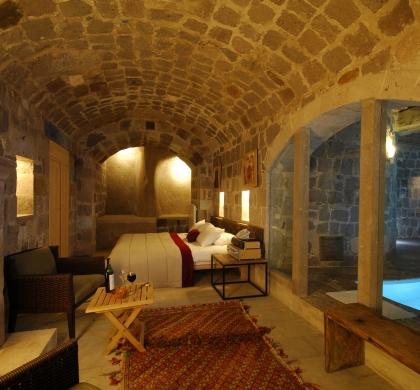
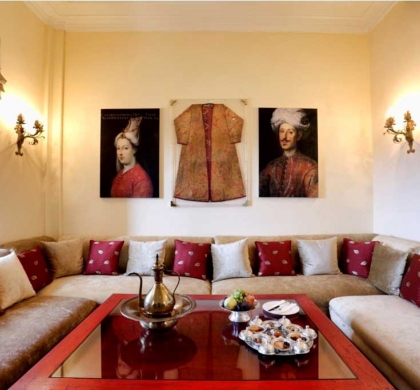
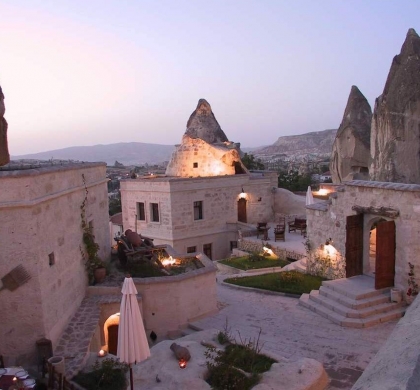
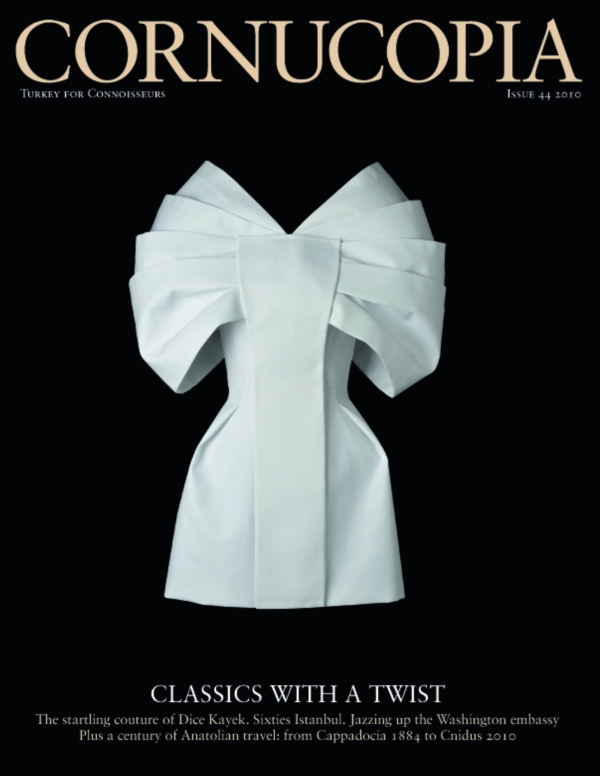
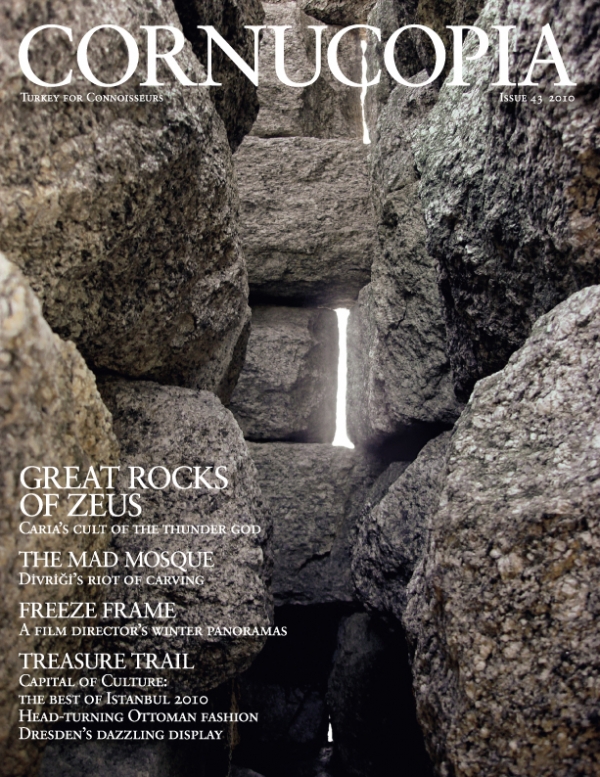
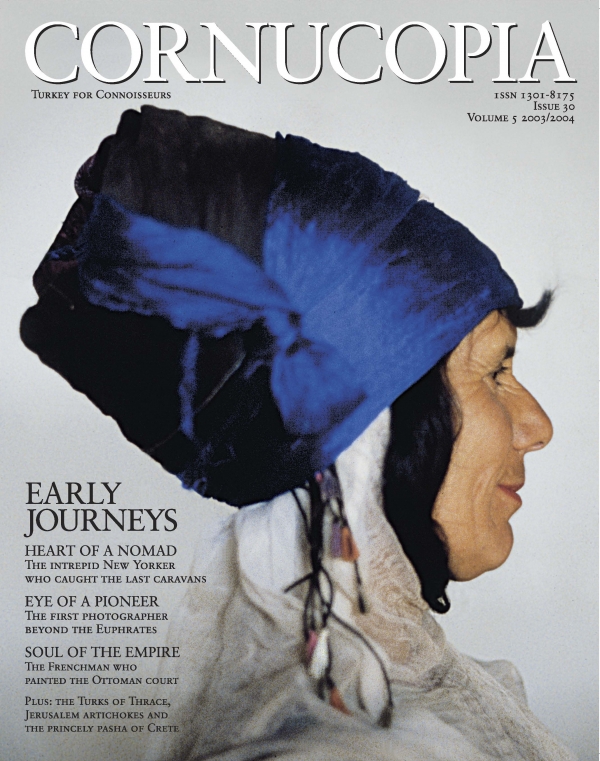
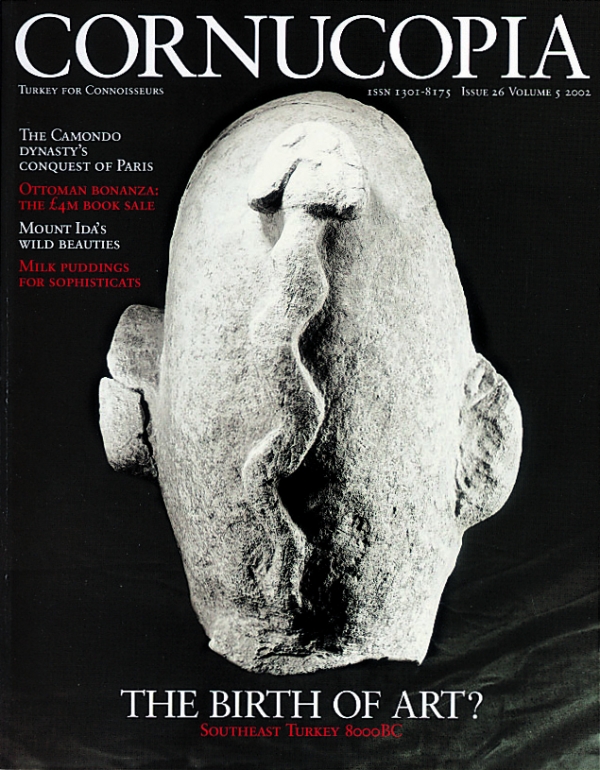

Cornucopia works in partnership with the digital publishing platform Exact Editions to offer individual and institutional subscribers unlimited access to a searchable archive of fascinating back issues and every newly published issue. The digital edition of Cornucopia is available cross-platform on web, iOS and Android and offers a comprehensive search function, allowing the title’s cultural content to be delved into at the touch of a button.
Digital Subscription: £18.99 / $18.99 (1 year)
Subscribe now